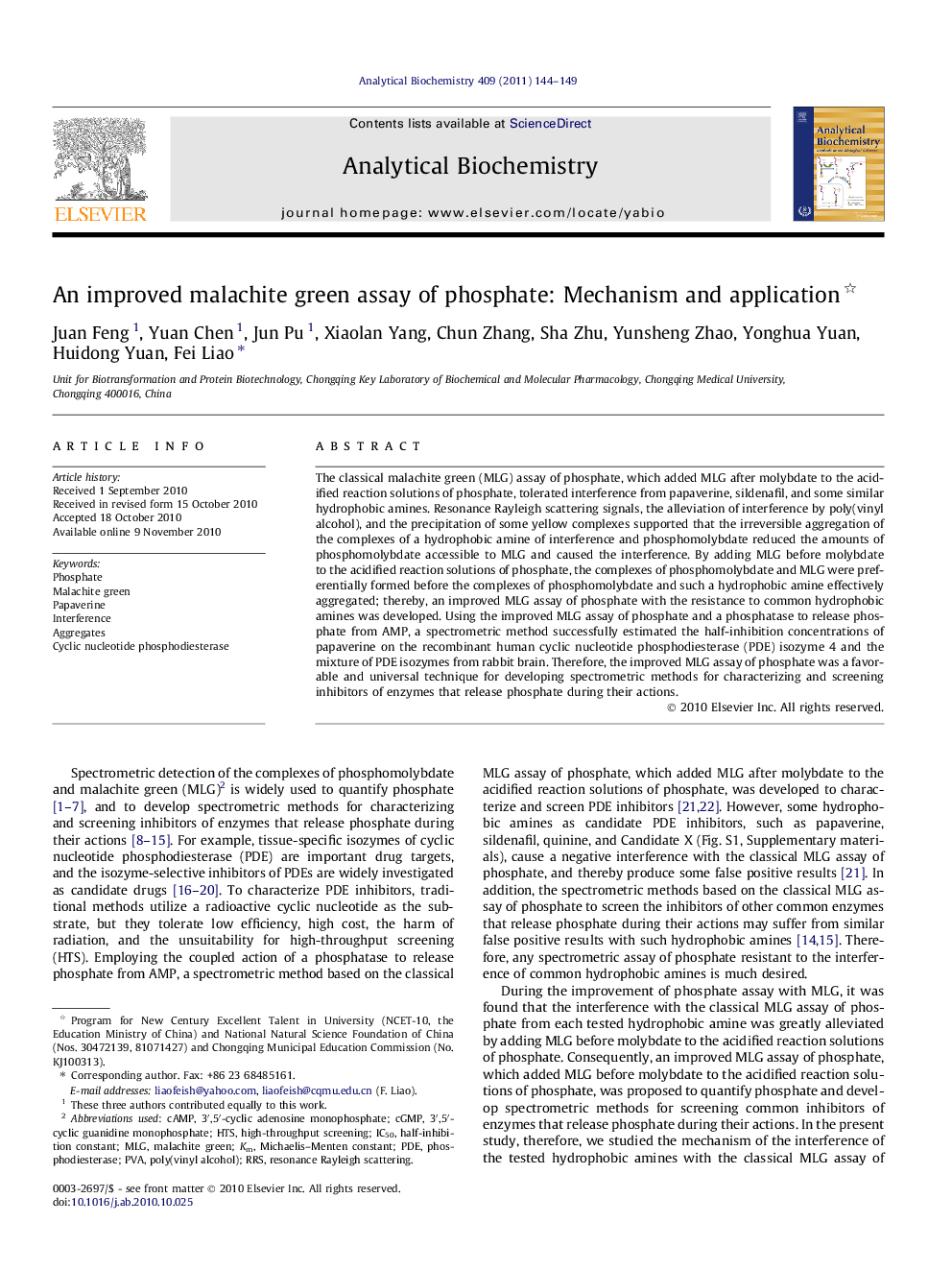| Article ID | Journal | Published Year | Pages | File Type |
|---|---|---|---|---|
| 1174814 | Analytical Biochemistry | 2011 | 6 Pages |
The classical malachite green (MLG) assay of phosphate, which added MLG after molybdate to the acidified reaction solutions of phosphate, tolerated interference from papaverine, sildenafil, and some similar hydrophobic amines. Resonance Rayleigh scattering signals, the alleviation of interference by poly(vinyl alcohol), and the precipitation of some yellow complexes supported that the irreversible aggregation of the complexes of a hydrophobic amine of interference and phosphomolybdate reduced the amounts of phosphomolybdate accessible to MLG and caused the interference. By adding MLG before molybdate to the acidified reaction solutions of phosphate, the complexes of phosphomolybdate and MLG were preferentially formed before the complexes of phosphomolybdate and such a hydrophobic amine effectively aggregated; thereby, an improved MLG assay of phosphate with the resistance to common hydrophobic amines was developed. Using the improved MLG assay of phosphate and a phosphatase to release phosphate from AMP, a spectrometric method successfully estimated the half-inhibition concentrations of papaverine on the recombinant human cyclic nucleotide phosphodiesterase (PDE) isozyme 4 and the mixture of PDE isozymes from rabbit brain. Therefore, the improved MLG assay of phosphate was a favorable and universal technique for developing spectrometric methods for characterizing and screening inhibitors of enzymes that release phosphate during their actions.
